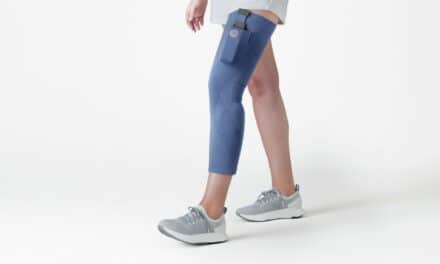.png) Helping Hands, a team of mechanical and bioengineering students based out of Rice University, Houston, Texas, recently devised a rehabilitation device designed to restore strength and flexibility to the hands and wrists of children with cerebral palsy (CP), according to a Rice University news release. The students’ mentor, Gloria Gogola, MD, pediatric hand and upper-extremity surgeon at Shriners Hospitals for Children in Houston, reportedly inspired the Dino-Might rehabilitation device. The release notes that Gogola corrects spastic wrist flexion deformity and restores wrist extension by surgically removing a tendon from the underside of the wrist and attaching it to the upper portion.
Helping Hands, a team of mechanical and bioengineering students based out of Rice University, Houston, Texas, recently devised a rehabilitation device designed to restore strength and flexibility to the hands and wrists of children with cerebral palsy (CP), according to a Rice University news release. The students’ mentor, Gloria Gogola, MD, pediatric hand and upper-extremity surgeon at Shriners Hospitals for Children in Houston, reportedly inspired the Dino-Might rehabilitation device. The release notes that Gogola corrects spastic wrist flexion deformity and restores wrist extension by surgically removing a tendon from the underside of the wrist and attaching it to the upper portion.
Gogola reportedly requested a rehabilitation device that could accommodate patients post-surgery and assist in restoring normal use of the wrist. Based on the request, the Dino-Might device, students say, prompts the child to appropriately adjust his or her movements with a computer game starring an animated dinosaur. In this way, the device is designed to securely position the patient’s limb, senses and records its strengths, and provides exercise for the weakened wrist. The news release reports that on the device’s display screen, patients are given an angular route and asked to follow it as closely as possible. Researchers use a graphical user interface (GUI) and a data acquisition device to record results of the patient’s movements while results are displayed in real time.
The team adds that they have already tested the device in Gogola’s clinic and used the results to recalibrate the device’s sensors. “Every time the device is used on a new patient, it’s adjusted and customized to fit that child,” senior student Jenna Desmarais, mechanical engineering, explains. The university’s news release also notes that the device may also have treatment implications for older stroke and spinal cord injury (SCI) patients. Gogola reportedly plans to use this device to treat her pediatric patients and report her findings to the team at Rice.
To watch a video of Dino-Might, click here.
Source: Rice University




